To support MIT Technology Review’s journalism, please consider becoming a subscriber.
OSN team activities
The activities of each of the OSN teams mentioned is unclear—the agencies involved in OSN responded to our request for clarification by saying that “mutual aid” and “joint response” was commonplace, and that a collaborative response to trials for officers outside of the George Floyd murder did occur. “As with any event that could span across multiple agencies or government entities, affected groups met to discuss how collaboration could best occur to ensure public safety,” the Minneapolis Police Department said in an email. “These relationships and efforts continue. OSN is no longer operational.”
However, multiple email chains we examined dated in October included meetings of “OSN Communications,” “OSN Executive Team” and the “OSN Intel Team” related to preparations for protests that may arise around the trial of Kim Potter, the officer who killed Daunte Wright, as well as trials for the three officers other than Chauvin who were charged with crimes in connection with George Floyd’s murder. (Potter was found guilty of manslaughter and sentenced last month; the three officers involved in Floyd’s murder were convicted in federal court last month and are awaiting sentencing.) In one executive team meeting email, the agenda refers to the ongoing plans as “OSN 2.0.” Bruce Gordon, a spokesperson from the state Department of Public Safety, says any such reference was “informal,” and that “there never has been, nor is there now, an OSN 2.0.”
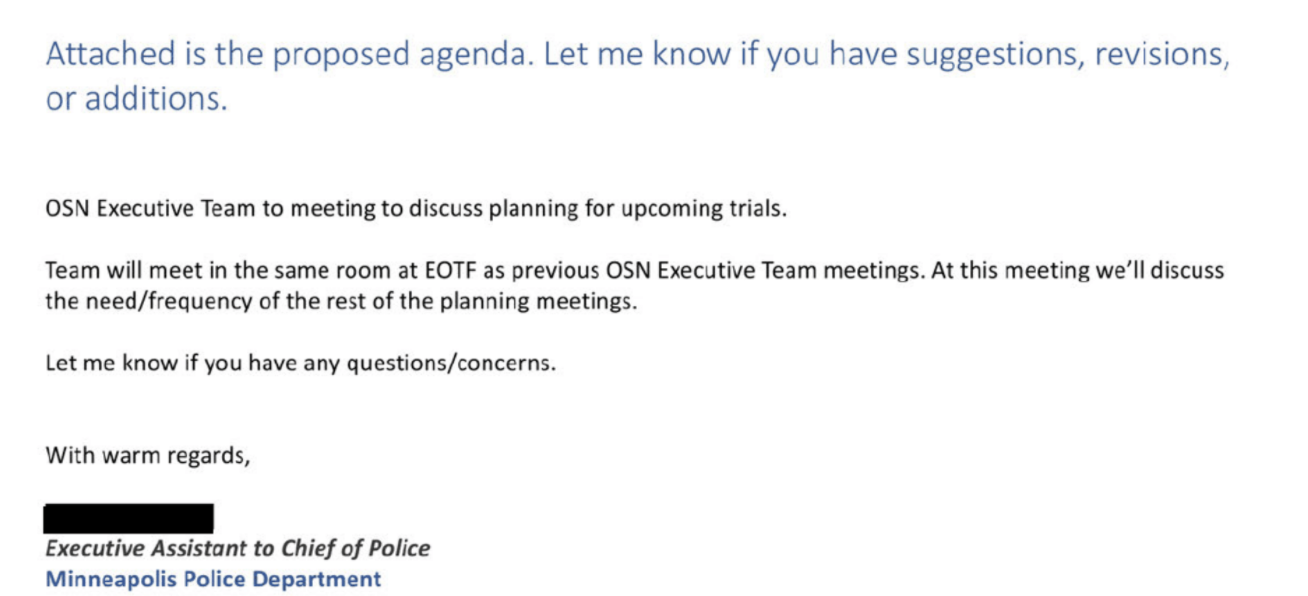
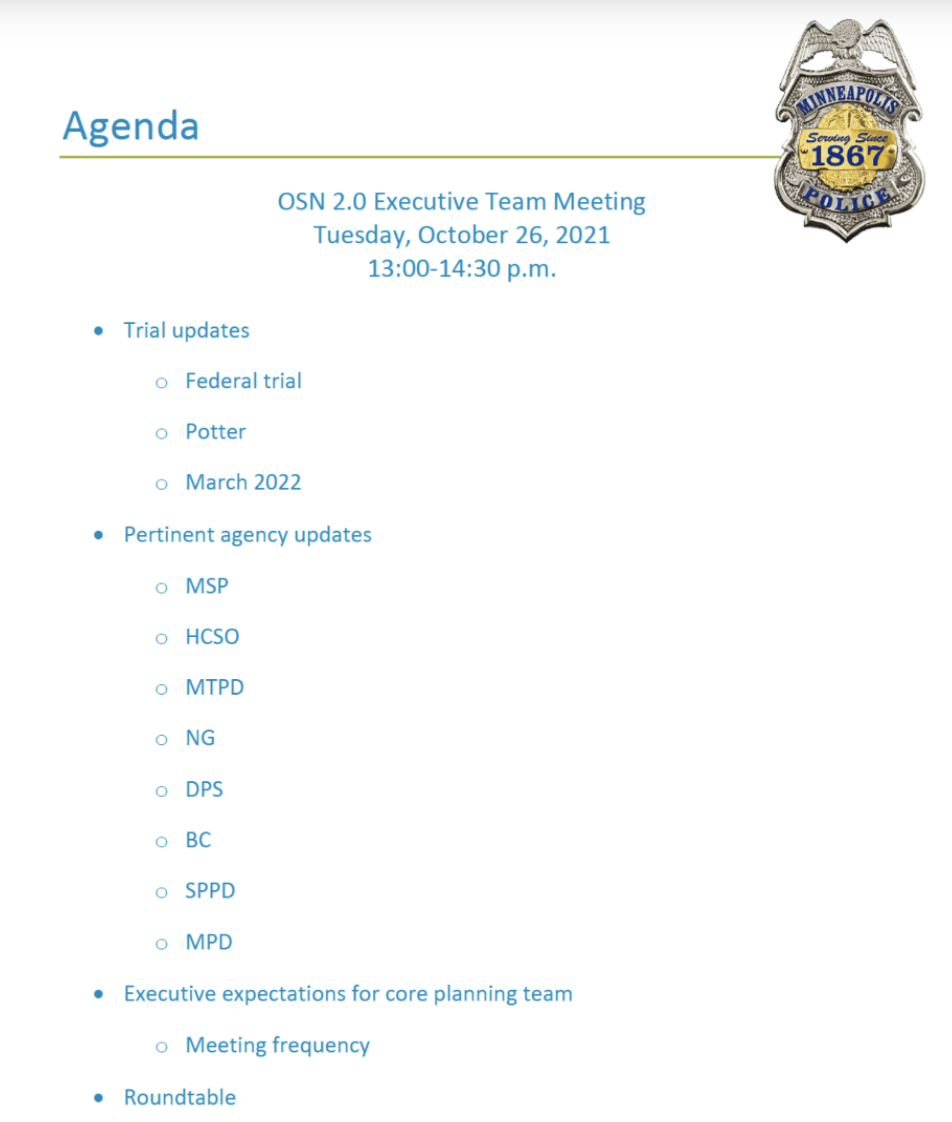
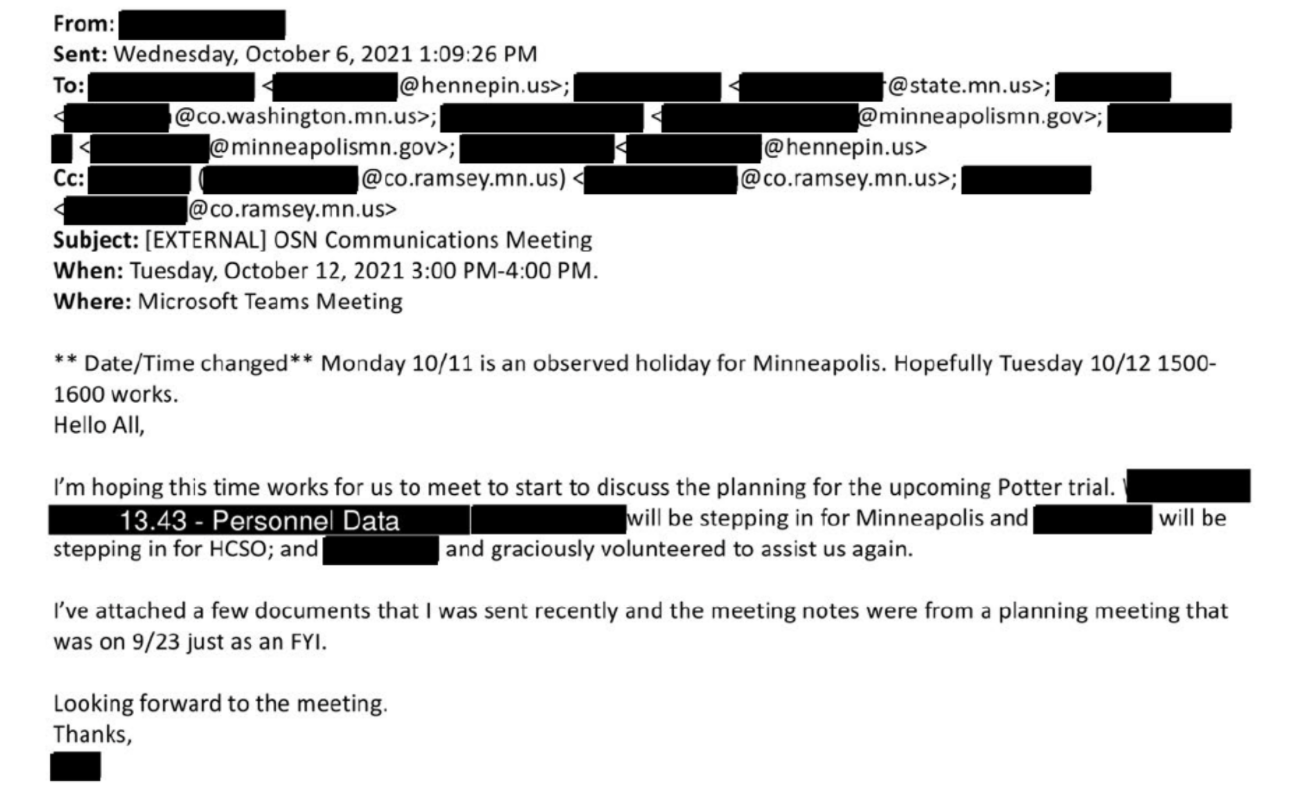
On the intelligence team, shared files used to pass information between law enforcement agencies continued to be added to and updated as of last October, which is the latest period covered by our records requests. The group was holding regular meetings, according to emails consisting of 12 people, including two from the FBI. In a response to a request for comment from MIT Technology Review, Cynthia Barrington, a public affairs officer with the FBI, said that the bureau’s activities extended to sharing information “through state and regional fusion centers.” Barrington also acknowledged the bureau’s involvement in preparations for protests stemming from other trials other than Chauvin’s. “This was the case during the run up to the state trial involving former Minneapolis Police Officer Derek Chauvin, as well as during preparations preceding subsequent court activities surrounding recent highly publicized state and federal prosecutions.”
“The ‘Intel Team’ by name is an email group of local, state, and federal agencies with law enforcement responsibilities during OSN,” Gordon says. “These agencies are involved with other event planning, and the same group email may have been used in other, unrelated planning efforts. All agencies involved have ongoing responsibilities related to public safety that did not end when OSN ended.”

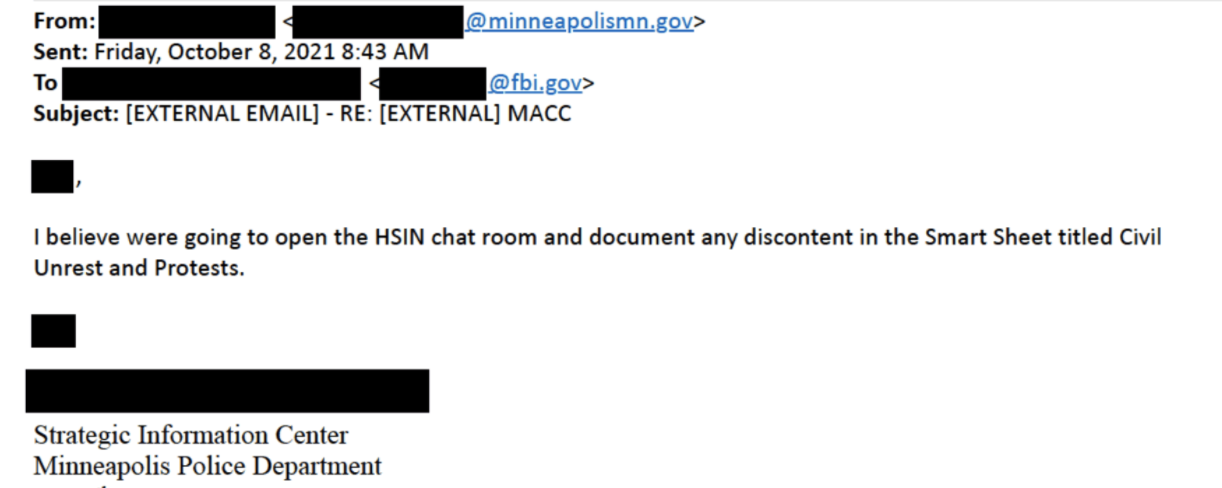
Munira Mohamed, a policy associate at the ACLU of Minnesota, said that the “porous nature” of collaborative law enforcement practices creates “all these opportunities for loopholes and to evade public scrutiny and public oversight.” Mohamed said the ongoing nature of OSN activities is a “tale of mission creep” and that “the history of surveillance and these law enforcement agencies is that once the infrastructure for something is set up, it kind of goes on unabated, it continues, and it becomes a permanent infrastructure.”
Although it is unclear to what extent the program’s ongoing nature is formal, many of the teams, operations, and communication structures put in place for OSN remain in effect to this day and are used to respond to protest activity. A spokesperson for the Minneapolis Police Department told MIT Technology Review in an email that the agency had “returned to normal operations at the conclusion of OSN effective Friday, April 23rd.” Hennepin County Sheriff’s Department has declined our requests for comment.

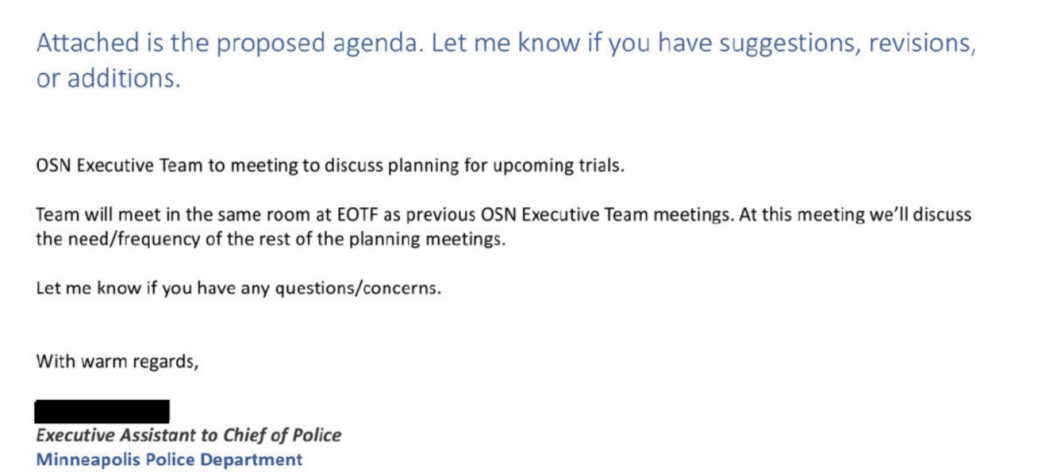



Recent Comments